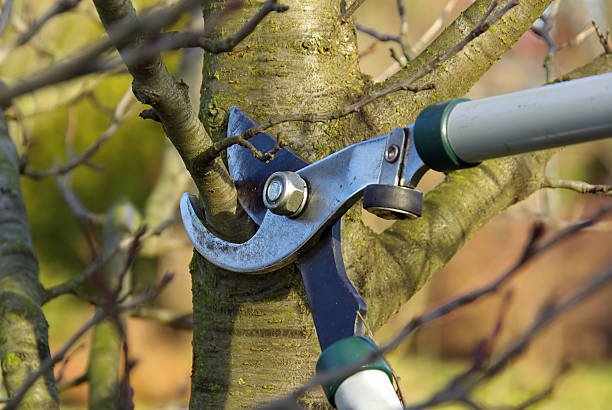Tree pruning is an essential practice for maintaining the health, safety, and beauty of trees. Whether you’re a homeowner looking to enhance the aesthetics of your yard or an arborist maintaining a healthy landscape, proper pruning is key to encouraging growth and preventing disease. This article will guide you through the best practices for tree pruning in Pittsburgh PA and how it impacts the overall health of your trees.
What is Tree Pruning?
Tree pruning involves the selective removal of branches to improve a tree’s structure, enhance its beauty, or promote healthy growth. It also helps in removing dead or diseased branches, which can prevent further decay and maintain the safety of the surrounding area.
Why is Tree Pruning Important?
Pruning offers multiple benefits:
- Health: Removes dead or dying branches to prevent disease spread.
- Growth: Promotes new growth by allowing sunlight to penetrate the tree canopy.
- Safety: Reduces risks of falling branches, especially in hazardous weather.
- Aesthetics: Shapes the tree for a balanced, beautiful appearance.
Types of Tree Pruning
Tree pruning can be classified into several types based on the objective:
- Crown Thinning: Removal of smaller branches to improve air circulation and light penetration.
- Crown Lifting: Trimming the lower branches to elevate the tree’s canopy.
- Crown Reduction: Reducing the height or spread of a tree.
- Dead Pruning: Cutting away dead, diseased, or dying branches.
- Pollarding: Severe pruning to control the size of trees, often used for fast-growing species.
When is the Best Time to Prune Trees?
Timing is crucial when it comes to tree pruning:
- Winter Pruning: Pruning during dormancy (late winter) encourages vigorous spring growth.
- Summer Pruning: Ideal for controlling growth and reducing the risk of disease.
- Avoid Fall Pruning: Pruning in the fall can lead to slow wound healing and increased susceptibility to pests.
Tools Needed for Effective Tree Pruning
Having the right tools ensures a clean, precise cut:
- Hand Pruners: For small branches.
- Loppers: For thicker branches up to 2 inches in diameter.
- Pruning Saws: For branches over 2 inches in diameter.
- Pole Pruners: For hard-to-reach branches.
- Protective Gear: Gloves, safety glasses, and hard hats for safety.
How to Prune Trees Correctly?
Follow these steps for safe and effective pruning:
- Inspect the Tree: Look for dead or diseased branches and areas that need thinning.
- Start with Dead or Diseased Wood: Cut back to the healthy tissue.
- Focus on Branches: Make cuts just above a bud, at a 45-degree angle.
- Avoid Over-Pruning: Never remove more than 25% of a tree’s foliage at one time.
Common Mistakes to Avoid
- Topping: Cutting off the upper portion of the tree leads to weak, fast-growing branches.
- Improper Cutting: Flush cuts or leaving stubs can cause decay and disease.
- Over-Pruning: Removing too many branches weakens the tree, making it more susceptible to stress and disease.
The Role of a Certified Arborist
Hiring a certified arborist for tree pruning ensures that your trees are cared for properly. Arborists are trained professionals who understand the biology of trees and the science behind pruning, which helps maintain the tree’s health and longevity.
FAQs
Q1: How often should I prune my trees?
Most trees benefit from pruning every 3-5 years, but it depends on the tree species, age, and overall health. Consult an arborist for the best advice.
Q2: Is it safe to prune trees on my own?
For small trees, DIY pruning can be safe. However, larger trees or trees near power lines should be handled by a professional to avoid injury or damage.
Q3: Can pruning damage a tree?
Improper pruning techniques, such as over-pruning or topping, can stress or damage a tree. It’s essential to follow correct pruning practices.
Q4: What should I do with diseased branches after pruning?
Diseased branches should be removed from the area and disposed of properly to prevent spreading diseases to other trees.
Q5: What is the difference between pruning and trimming?
Pruning is typically done to improve the health of the tree by removing dead or diseased branches, while trimming is primarily for aesthetic purposes to shape and control growth.
Conclusion
Mastering best tree pruning is crucial for the health and beauty of your trees. Whether you’re pruning for safety, aesthetics, or growth, following the correct techniques can make a significant difference in your landscape. When in doubt, always consult a certified arborist to ensure your trees are pruned properly and remain healthy for years to come.
